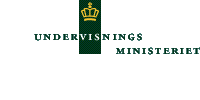
Indholdsfortegnelse
Preface
Preface
The Baltic
Sea Project
TO THE READER
Chapter 1 - Baltic 21 An AGENDA 21
for the Baltic Sea Region
Overall goals
Overall
Goal for Sustainable Development in the Baltic Sea Region
Overall
Goal for Baltic 21 Education
The
aims of Baltic 21
Introduction
to Schoolwork on BALTIC 21 Sectors
Methodology
Baltic 21
sector: Agriculture
Suggestions
for schoolwork with Baltic 21 sector: Agriculture
Baltic 21
sector: Education
Political
sector goal – Education (Schools) :
Suggestions
for schoolwork with Baltic 21 sector: Education
Baltic 21
sector: Energy
Political
sector goal - Energy:
Suggestions
for schoolwork with Baltic 21 sector: Energy
Baltic 21
sector: Fisheries
Political
sector goal - Fisheries:
Suggestions
for schoolwork with Baltic 21 sector: Fisheries
Baltic 21
sector: Forestry
Political
goal - Forestry:
Suggestions
for schoolwork with Baltic 21 sector: Forestry
Baltic 21
sector: Industry
Political
goal - Industry:
Suggestions
for schoolwork with Baltic 21 sector: Industry
Baltic 21
sector: Tourism
Political
goal - Tourism:
Suggestions
for schoolwork with Baltic 21 sector: Tourism
Baltic 21
sector: Transport
Political
goal - Transport:
Suggestions
for schoolwork with Baltic 21 sector: Transport
Chapter 2 Education for Sustainable
Development in the Baltic Sea Region
The Haga
Declaration
Goals
The
second meeting of Ministers of Education, January 2002
The
Baltic Sea Project in the implementation of Baltic 21E
Measuring
Progress – Key Elements
Suggested
Methods for Self-evaluation (Indicators)
2.1
Evaluation model of the process of change in attitudes:
Environmental
History and the Time Dimension
Learning
from the past for the decisions of the future
Ideals
of environmental history studies conducted by students
Chapter 3 PERSPECTIVES
Sustainable
Agriculture, Food Quality and Human Health
Public
focus on food quality
FOOD
QUALITY AND HUMAN HEALTH
The Greenhouse
Effect and the Risk of Global Climate Change - Status 2000
Many
public misunderstandings
Tempereature IS
rising
The
“natural” greenhouse effect
The
energy budget of the Earth
What
will happen?
Rising
CO2 concentration
What
should be done?
The Global
Perspective in Environmental Work
The
Hoa Binh Dam in Vietnam
The
CARE project
Non-Governmental
Organisations, Democracy and Action Competence
From BSP
to Municipal Youth Council
On Biodiversity
Cultural
Activities »Stones for Bread« at Cathrinesminde
Teglværksmuseum
Chapter 4 Democracy as a Necessary
Prerequisite
Inform Others
of Your Work
List of Workshops
1.
HEALTY FOOD/NOVEL FOOD
2.
BIODIVERSITY & GREEN AREAS
3.
ENERGY FOR THE NEXT MILLENIUM
4.
ENVIRONMENTAL DRAMA
5.
IS TOURISM SUSTAINABLE
6.
ART & DESIGN - A CONCEPTUAL WORKSHOP
7.
RESTORATION OF HABITATS
8.
THE BALTIC SEA FOR FOOD!?
9.
SØNDERSKOVEN – FOREST MANAGEMENT & PRODUCTION
10.
FROM RESOURCE TO PRODUCT TO RUSTY HEAPS – OR?
11.
DOCUMENTATION - VIDEO DESIGN
12.
DOCUMENTATION - WEB DESIGN
13.
ENVIRONMENT HAS A HISTORY - USE OF RESOURCES
BSP
Students and Dialogue with Politicians
Do
we know enough?
How
to promote organic food?
Pesticides
Metal
in household garbage
Global
solutions needed
More
and better fish in the Baltic
Money
makes the world go round
Resolution
- a next step towards sustainability
Chapter 5 Best Practices on Sustainability
from schools in the Baltic Sea Region
Agriculture
Education
– Finnish Folk High Schools
Education
Energy
Energy Efficiency
Measures in Raguva Secondary School
Sustainable
Use of the Sea- for food, for medicine, for energy ...
Fisheries
in Nexø, Bornholm
Fisheries
in Kolobrzeg
Forestry
– Orchids and Biodiversity
SUSDEED
– SUSTAINABLE DEVELOPMENT IN EDUCATION
Schools
and universities in interaction
Discussion
Multiplier
effect
Soils in
Poland
Industry
– Invitation: Travel St. Petersburg with us
Where
should we begin?
Let
us begin our trip around St. Peters-burg – and travel the
microbes around us
Tourism
– Pelle and Lisa in the Stockholm Archipelago
Tourism
and Energy
Transport:
Exhaust Fumes – Research on Traffic Pollution
From Words
to Action “So Was” helps us sort the waste
Chapter 6 FROM LOCAL TO GLOBAL
Agenda 21
NOW!International Internet Conference The “Agenda 21 NOW!”
story
The
idea
Step
one:Title
Step
two: Basics
Step
three: Preparing a conference
Step
four: Finalising the structure
Step
five: How to find participants
Step
six: The operational team
Step
seven:Waiting for registrations
Step
eight: Moderators
Experiences
Lessons
learnt from the first conference in 2000
Agenda
21 NOW! 2001 – 2003: Ways to improve the conference
Professional
IT support
Moderator
training
Who
should the website be for?
Experts
The
conference theme
Expansion
and co-operation
Does
the Agenda 21 NOW! Internet conference reach its goals?
Appendix I
Appendix II

Denne side indgår i publikationen "EDUCATION FOR SUSTAINABLE DEVELOPMENT" som Indholdsfortegnelse
© Undervisningsministeriet 2003
|